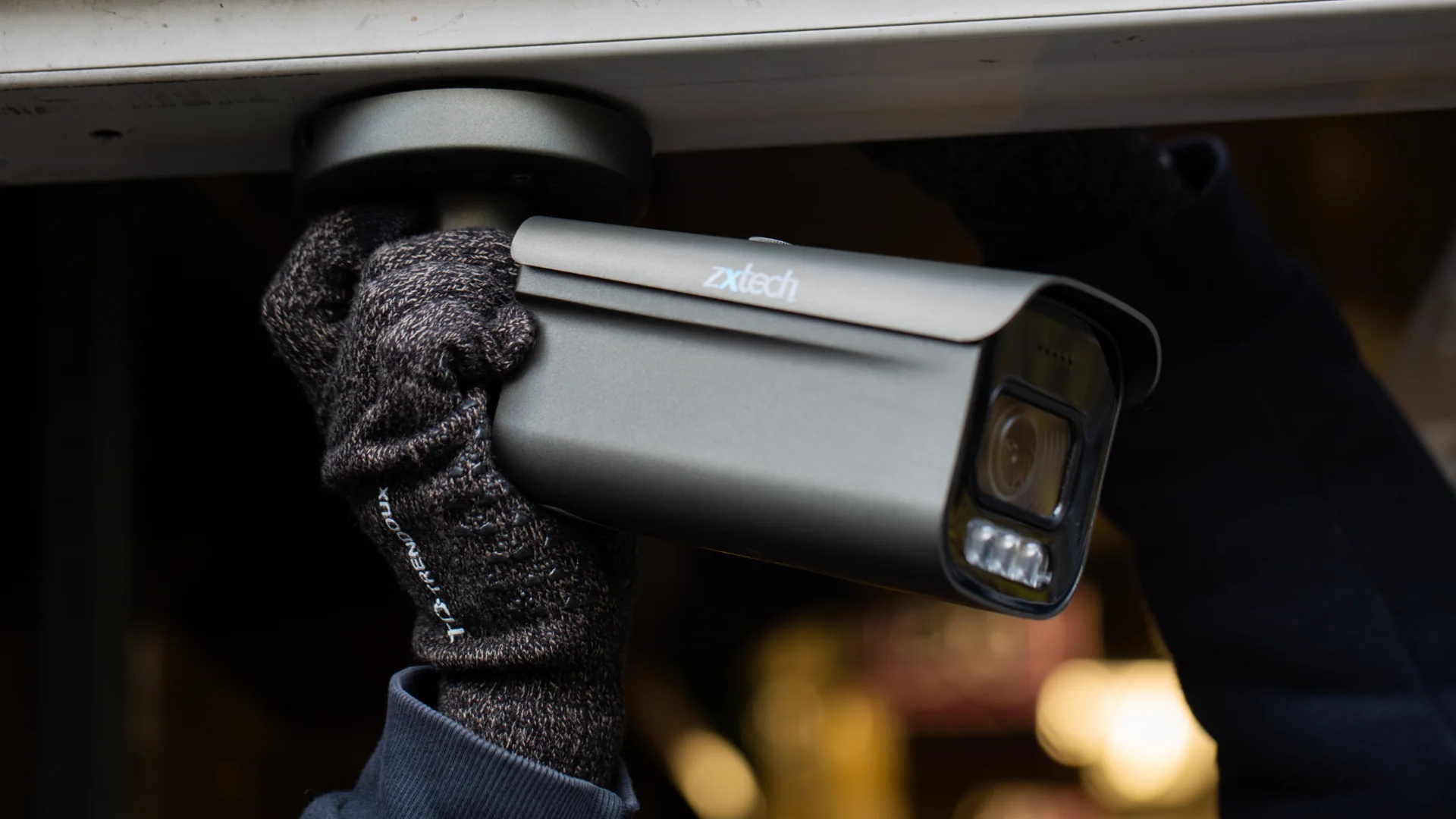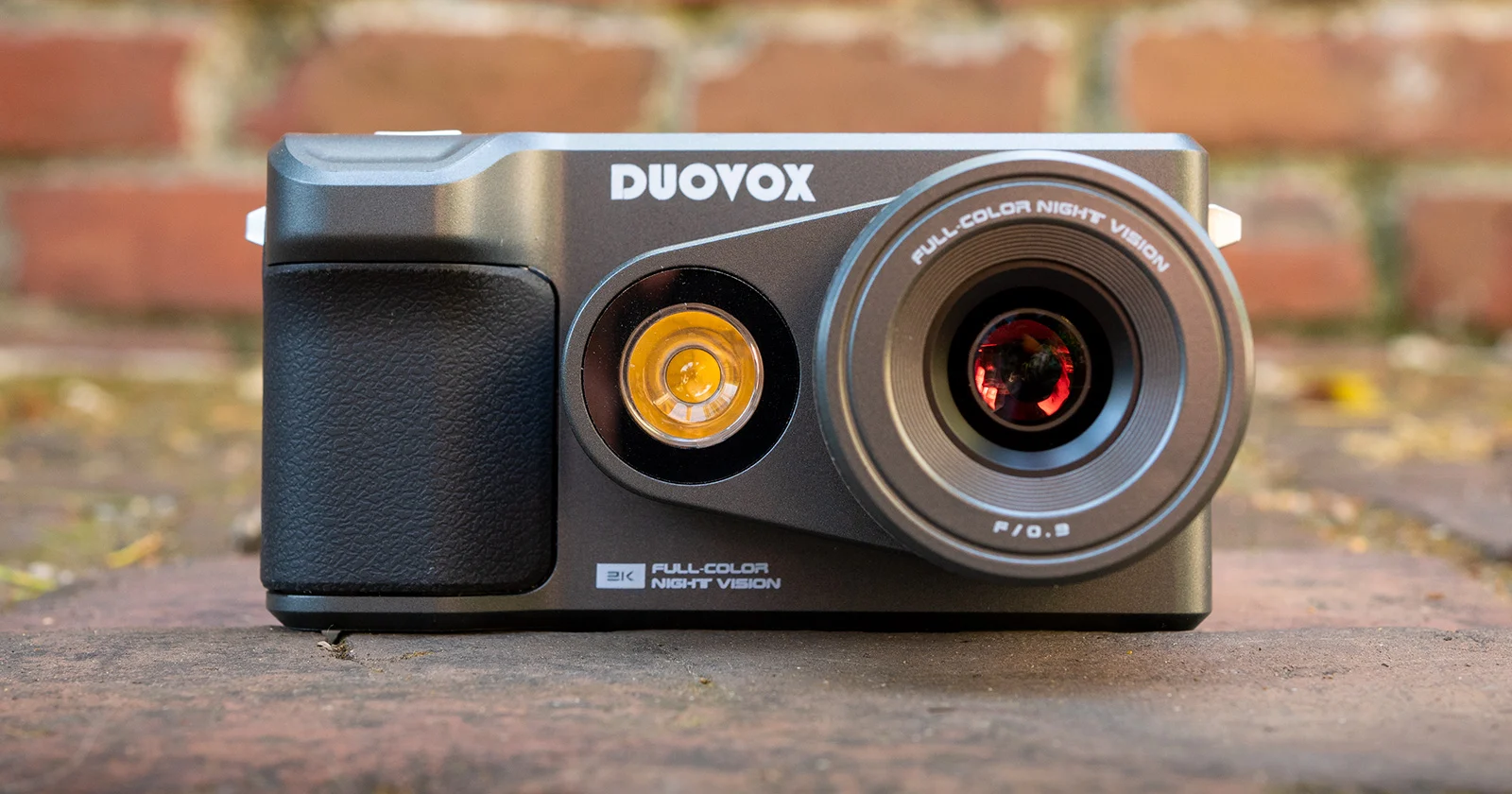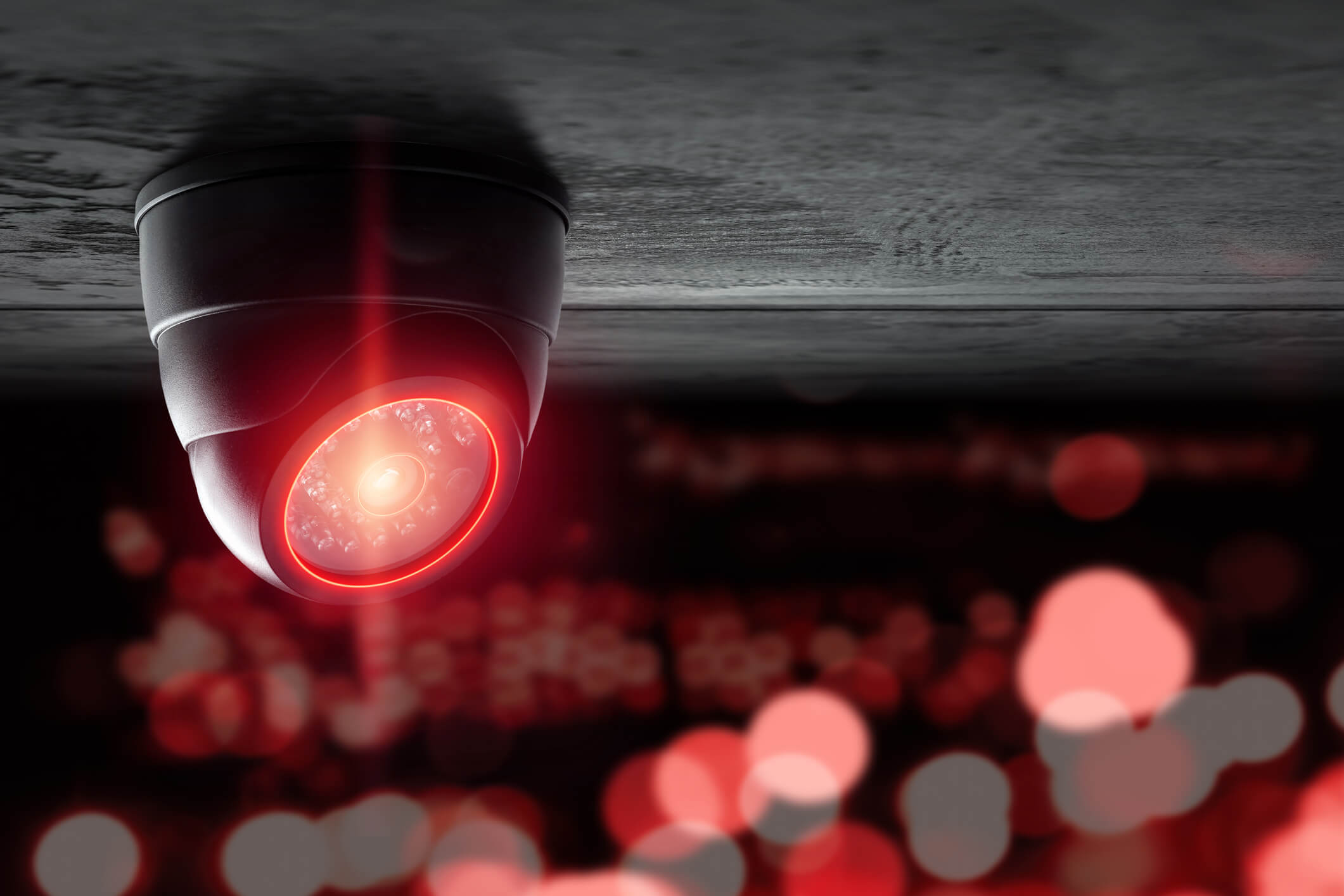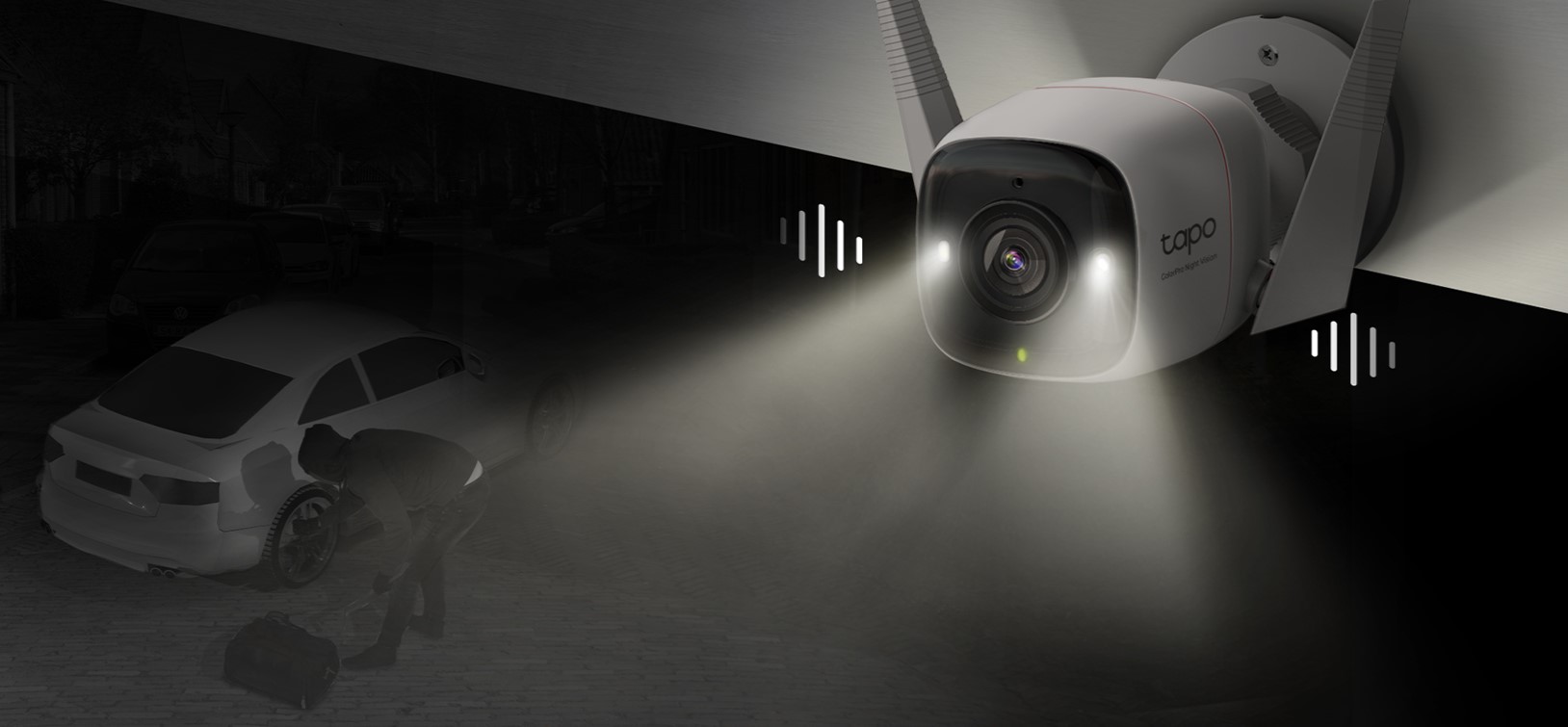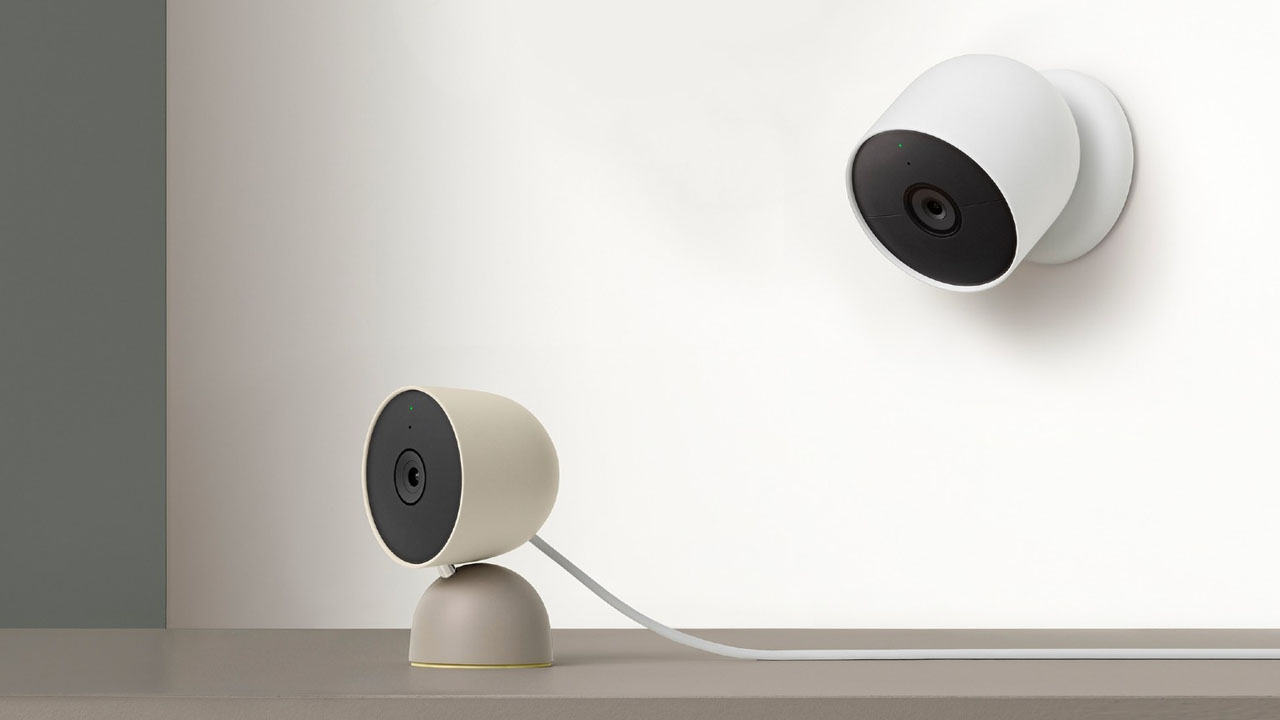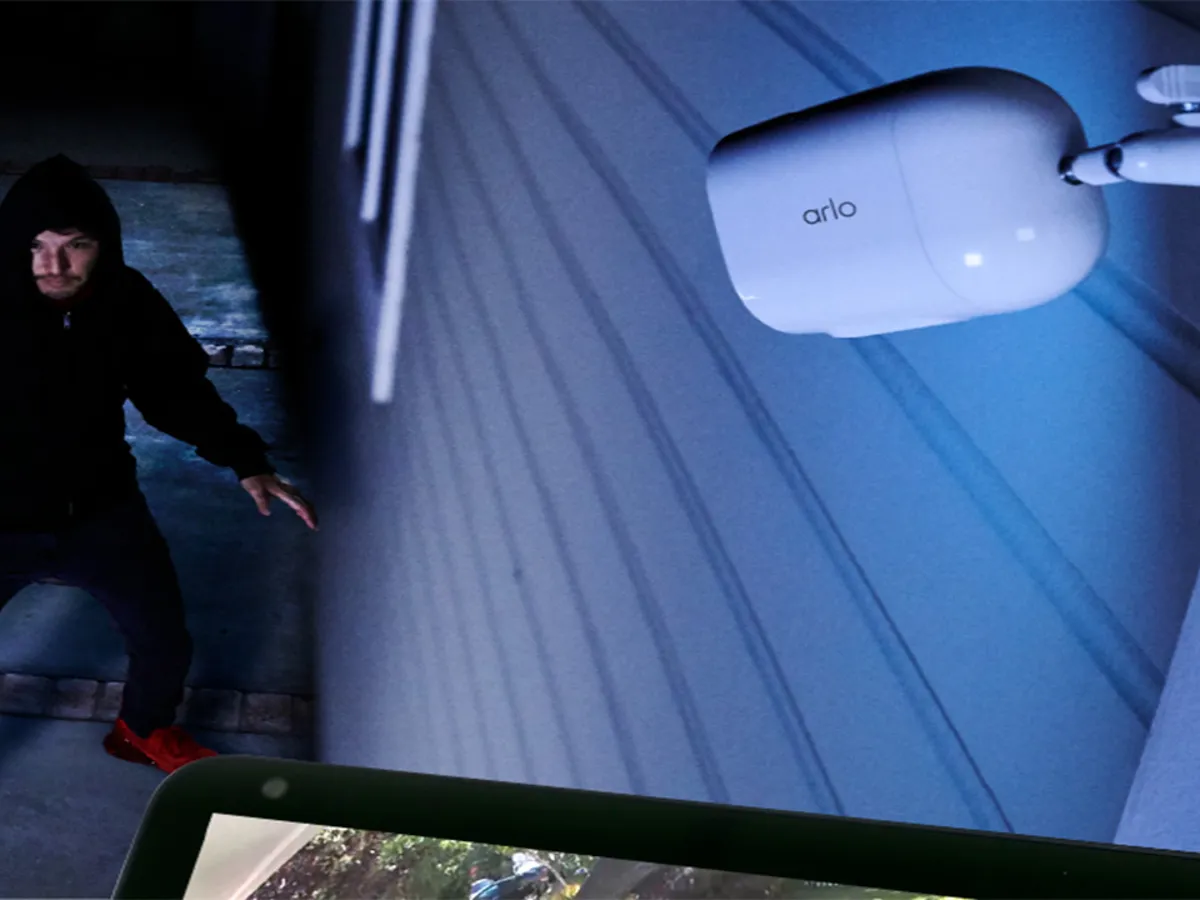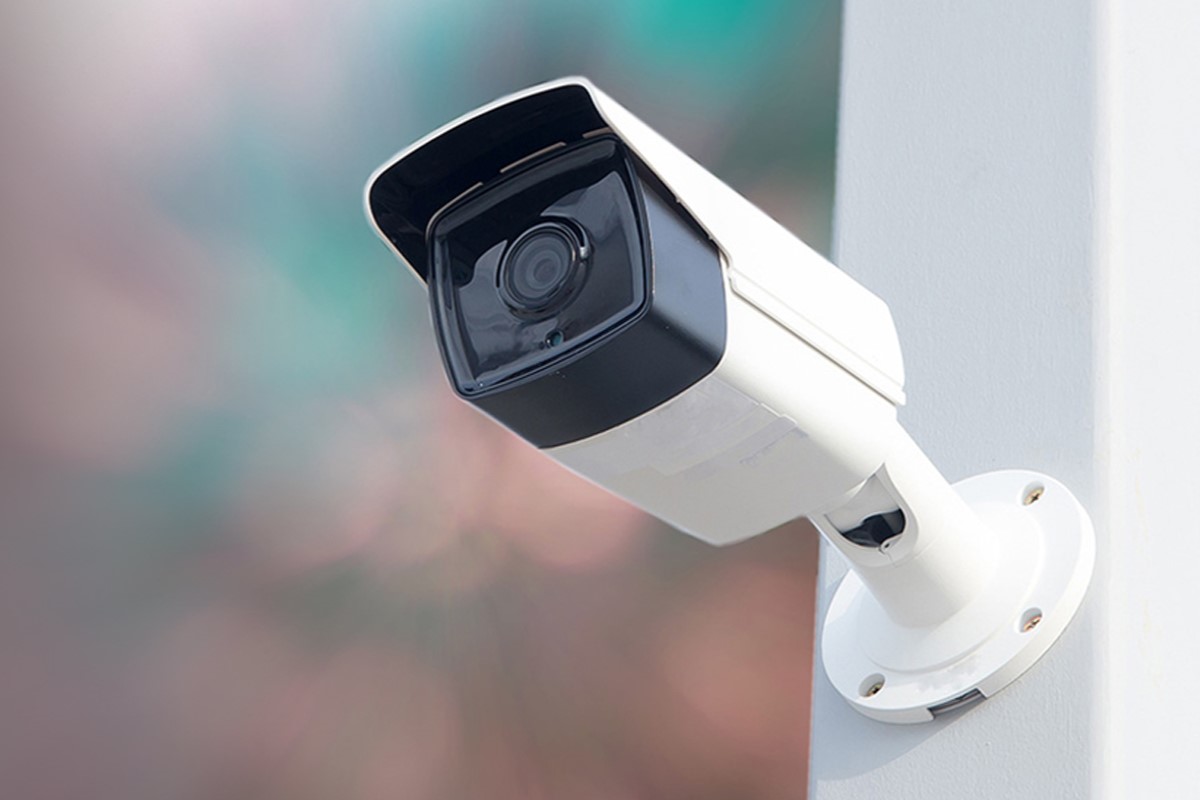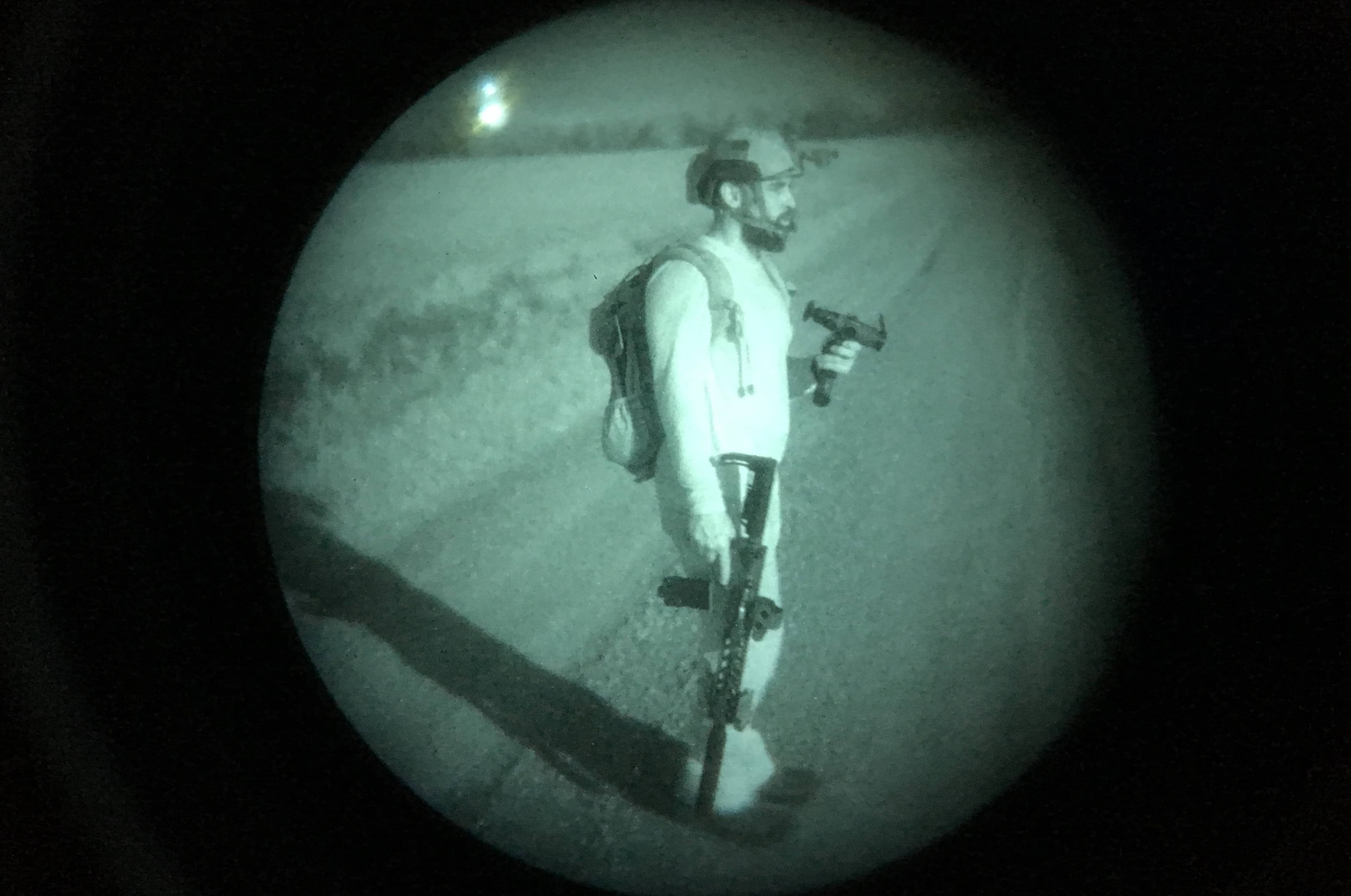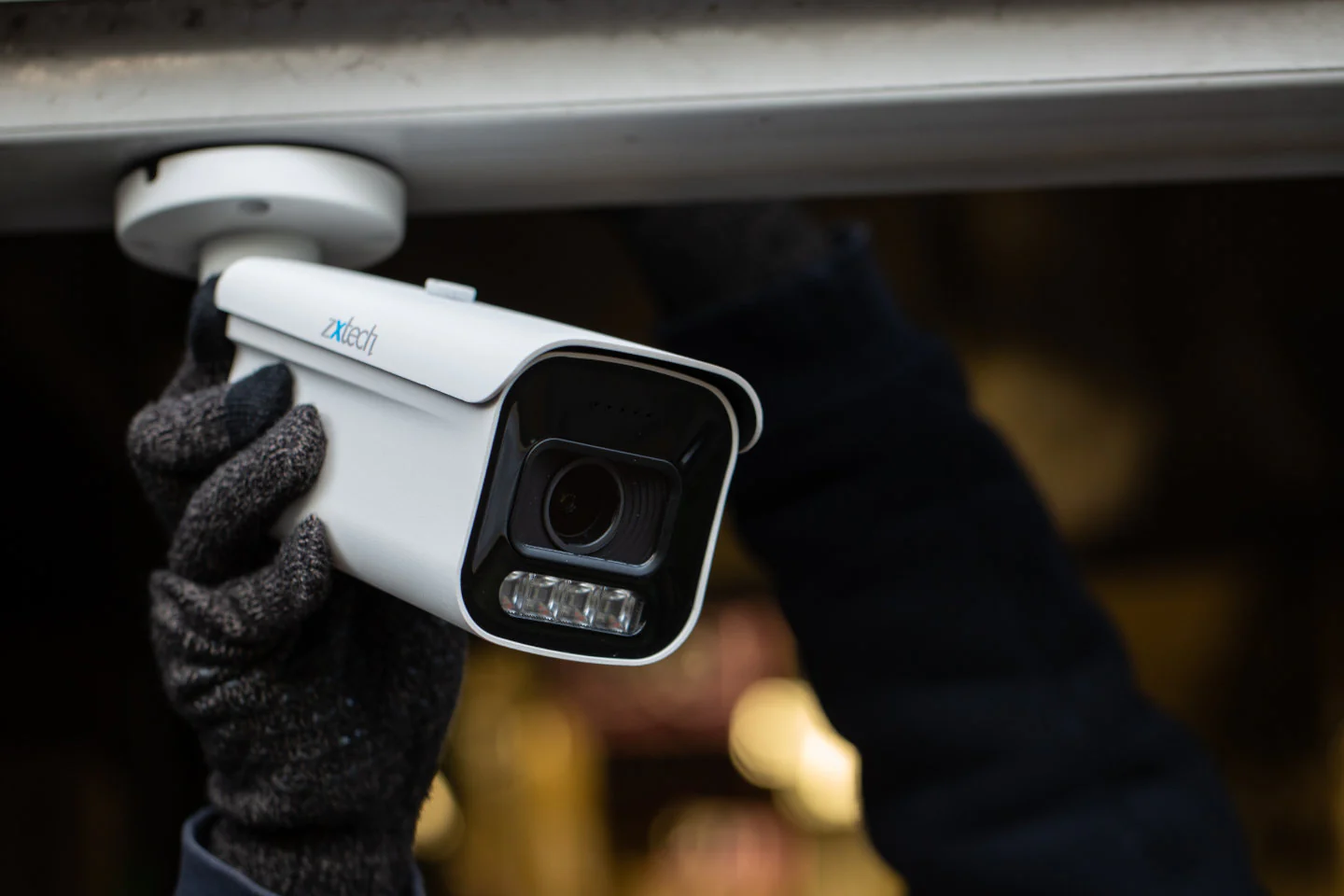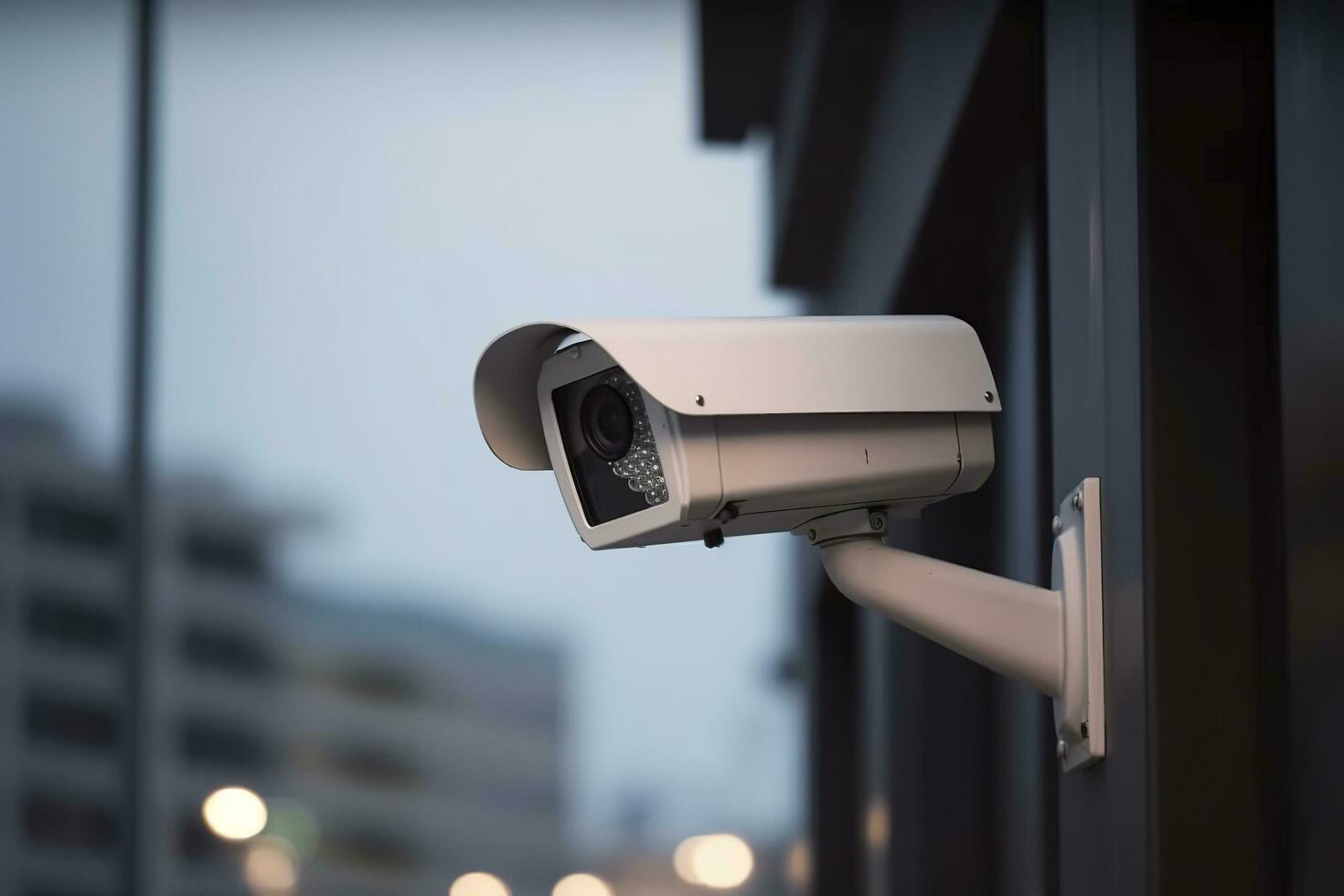Home>Home Security and Surveillance>What Type Of Sensing Equipment Does The Night Vision Camera System Use
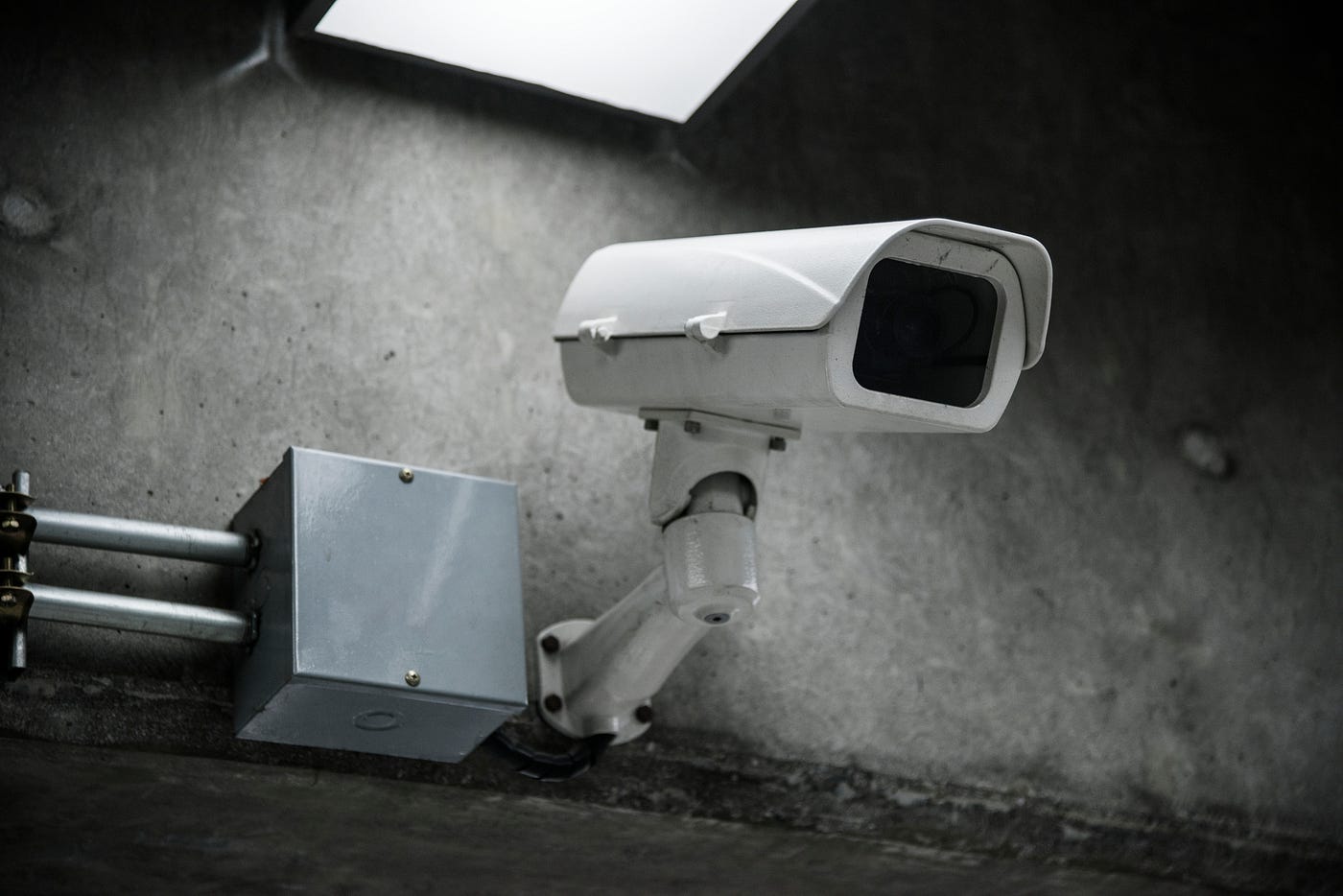

Home Security and Surveillance
What Type Of Sensing Equipment Does The Night Vision Camera System Use
Modified: March 6, 2024
The night vision camera system for home security and surveillance uses advanced sensing equipment to capture clear and detailed footage even in low light conditions.
(Many of the links in this article redirect to a specific reviewed product. Your purchase of these products through affiliate links helps to generate commission for Storables.com, at no extra cost. Learn more)
Introduction
Welcome to the world of home security and surveillance! In today’s age, ensuring the safety and protection of our homes and loved ones is of utmost importance. With advancements in technology, one of the most effective tools for achieving this is the night vision camera system. These cutting-edge surveillance systems offer enhanced visibility and monitoring capabilities, even in low-light conditions or complete darkness.
In this article, we will explore the fascinating world of night vision camera systems and delve into the different types of sensing equipment used in these systems. Understanding the various components and their functionalities will help you make informed decisions when choosing the right system for your home security needs.
So, without further ado, let’s dive into the world of night vision camera systems and uncover the secrets behind their sensing equipment!
Key Takeaways:
- Night vision camera systems use different sensing equipment like image intensification, thermal imaging, infrared illumination, and electro-optical sensors to capture clear images in low-light or dark conditions, ensuring enhanced home security.
- When choosing sensing equipment for a night vision camera system, consider factors like lighting conditions, visibility range, clarity, environmental factors, budget, and additional features to optimize surveillance performance and meet specific needs.
Overview of Night Vision Camera Systems
Night vision camera systems are revolutionizing the way we protect and monitor our homes. These systems are designed to provide clear and detailed images even in low-light or complete darkness, ensuring that no details go unnoticed. Whether you want to keep an eye on the perimeter of your property or monitor the interior of your home, a night vision camera system is an invaluable tool.
These systems typically consist of several components that work together seamlessly to provide exceptional visibility in the dark. One of the key components is the sensing equipment, which is responsible for capturing and creating image or video data. The sensing equipment plays a crucial role in determining the quality and accuracy of the images produced by the night vision camera system.
There are various types of sensing equipment used in night vision camera systems, each employing different technologies. In this article, we will explore some of the most commonly used sensing equipment, including image intensification, thermal imaging, infrared illumination, and electro-optical sensors.
By understanding the capabilities and limitations of each type of sensing equipment, you can make an informed decision that meets your specific surveillance needs. So, let’s roll up our sleeves and get familiar with the world of night vision camera sensing equipment.
Types of Sensing Equipment Used
When it comes to night vision camera systems, there are several types of sensing equipment used to capture images and provide visibility in low-light conditions. Let’s explore some of the most common ones:
1. Image Intensification:
Image intensification technology amplifies the available light, allowing the camera to capture clear and detailed images in low-light conditions. It works by collecting the small amounts of light present, converting it into electrons, and then amplifying those electrons to produce a visible image. Image intensification technology is commonly used in night vision goggles and devices, providing users with the ability to see in the dark.
2. Thermal Imaging:
Thermal imaging technology detects and captures the heat signatures emitted by objects and living beings. It works by using infrared radiation to detect temperature differences and create a visual representation of the heat patterns. Thermal cameras can produce images even in total darkness because they do not rely on visible light. They are particularly useful for detecting intruders or monitoring the movement of individuals or wildlife.
3. Infrared Illumination:
Infrared (IR) illumination involves the use of specialized IR lights to illuminate the area being monitored. These lights emit infrared wavelengths that are invisible to the human eye but can be detected by night vision cameras. By providing additional light in low-light conditions, infrared illumination enhances the visibility and clarity of images recorded by the camera.
4. Electro-Optical Sensors:
Electro-optical sensors combine various technologies, such as image intensification and thermal imaging, to provide comprehensive surveillance capabilities. These sensors can switch between different modes depending on the lighting conditions, allowing for optimal image capture and visibility. They offer a versatile solution, adapting to different environments and providing high-quality images regardless of the lighting conditions.
These are just a few examples of the types of sensing equipment used in night vision camera systems. Each type has its unique strengths and capabilities, catering to different surveillance needs. By understanding the functionality and limitations of each type, you can choose the one that best suits your specific requirements.
Now that we have familiarized ourselves with the various types of sensing equipment used in night vision camera systems, let’s dive deeper into the details of each technology and explore their features, benefits, and applications.
Image Intensification
Image intensification is a widely used technology in night vision camera systems that enhances the visibility of objects in low-light conditions. It works by amplifying the available light, such as moonlight or starlight, to produce a clearer and more detailed image.
Image intensification technology consists of several components that work together to capture and amplify the incoming light. The first component, the objective lens, gathers the light and focuses it onto a photocathode. The photocathode converts the incoming photons into electrons through a process called photoemission.
These electrons are then accelerated and multiplied in a component called a microchannel plate (MCP). The MCP is a thin plate with millions of microscopic channels that act as electron multipliers. As the electrons pass through these channels, they collide with the walls, releasing more electrons. This multiplication process significantly increases the number of electrons, resulting in a stronger signal.
The amplified electrons are then directed towards a phosphor screen located at the back of the image intensifier tube. When the electrons strike the phosphor screen, they cause it to emit light. The glowing phosphor screen creates a visible image that can be viewed through an eyepiece or captured by a camera sensor.
Image intensification technology provides several benefits for night vision camera systems. One of the major advantages is its ability to amplify the available light, enabling the camera to capture clear images even in extremely low-light conditions. This makes it ideal for applications where there is minimal ambient light, such as nighttime surveillance or military operations.
Moreover, image intensification technology offers a real-time viewing experience. As the image is created and amplified immediately, it allows for instantaneous monitoring and detection of objects or individuals. This makes it suitable for scenarios that require quick response and immediate action.
However, it’s important to note that image intensification has certain limitations. It relies on the availability of ambient light to amplify, so in completely dark environments, it may not provide sufficient visibility. Additionally, it can be susceptible to overexposure or blooming when exposed to bright light sources, which can reduce image quality.
Nevertheless, image intensification remains a popular and effective technology in night vision camera systems due to its ability to provide enhanced visibility in low-light conditions. It has applications in various fields, including home security, law enforcement, wildlife observation, and more.
Now that we have explored image intensification, let’s move on to another type of sensing equipment used in night vision camera systems: thermal imaging.
Thermal Imaging
Thermal imaging is a powerful technology used in night vision camera systems to detect and capture the heat signatures emitted by objects and living beings. Unlike other sensing equipment, thermal imaging does not rely on visible light. Instead, it uses infrared radiation to create visual representations of heat patterns.
Thermal cameras work by detecting the tiny differences in temperature and converting them into a visible image. They are equipped with a specialized sensor called a microbolometer, which consists of an array of tiny infrared detectors. These detectors measure the infrared radiation emitted by objects and convert it into an electrical signal.
The electrical signal is then processed by the camera’s onboard computer, which generates a thermal image that represents different temperature levels. The resulting image displays warmer objects in brighter colors (such as red, orange, and yellow) and cooler objects in darker colors (such as blue and green).
One of the major advantages of thermal imaging is its ability to provide visibility in complete darkness. Since thermal cameras detect heat, they can capture images even when there is no ambient light available. This makes them ideal for surveillance applications where visibility is crucial, such as intruder detection or nighttime wildlife monitoring.
Thermal imaging also offers several benefits in challenging environments. For example, it can effectively penetrate obscurants like smoke, fog, or dust, allowing for clear detection and tracking of objects regardless of the environmental conditions. Additionally, thermal cameras can provide a wide field of view, enabling a broad coverage area and reducing the need for multiple cameras.
However, it is important to note that thermal imaging has its limitations as well. It is unable to provide fine details or facial recognition as it primarily detects heat signatures rather than visual features. Additionally, the accuracy of thermal imaging may be affected by the distance between the camera and the object, as well as the surface emissivity of the objects being observed.
Despite these limitations, thermal imaging remains an incredibly valuable tool in night vision camera systems. It is widely used in various applications, including security surveillance, search and rescue operations, firefighting, and industrial inspections.
Now that we have explored thermal imaging, let’s move on to another type of sensing equipment used in night vision camera systems: infrared illumination.
Read more: What Is An IR Night Vision Camera
Infrared Illumination
Infrared illumination is a critical component of night vision camera systems that provides additional light in low-light conditions to enhance visibility. While our eyes cannot see infrared light, night vision cameras can detect and utilize it to capture clear images even in complete darkness.
Infrared (IR) illumination involves the use of specialized IR lights or LEDs (Light-Emitting Diodes) that emit infrared wavelengths. These lights are placed strategically around the surveillance area, providing an invisible light source that is undetectable to the human eye.
When the IR lights are turned on, they illuminate the area with infrared light, which is then reflected by objects and sensed by the night vision camera. The camera’s sensor is designed to detect infrared light and convert it into a visible image or video.
Infrared illumination offers several advantages in night vision camera systems. It enables the camera to capture detailed images even in total darkness, ensuring that no details go unnoticed. This makes it an excellent choice for nighttime surveillance, where ambient light is minimal or nonexistent.
Furthermore, infrared illumination provides a covert operation capability, as the emitted infrared light is invisible to the human eye. This is beneficial in situations where discreet monitoring is required, such as catching trespassers or observing wildlife without disturbing their natural behavior.
Another advantage of infrared illumination is its ability to penetrate through certain materials like fog, smoke, and dust. This allows for clearer visibility even in challenging weather conditions or environments with airborne particles.
However, it is important to note that the effectiveness of infrared illumination can be limited by factors such as the strength of the IR lights, the distance between the camera and the object, and the reflective properties of the objects in the scene. It is crucial to consider these factors when designing a night vision camera system to ensure optimal performance.
Infrared illumination has a wide range of applications, including home security, commercial surveillance, wildlife observation, and law enforcement. By providing additional light in low-light conditions, it ensures that your premises are monitored effectively, regardless of the time of day or lighting conditions.
Now that we have explored infrared illumination, let’s move on to another type of sensing equipment used in night vision camera systems: electro-optical sensors.
Electro-Optical Sensors
Electro-optical sensors are versatile sensing equipment used in night vision camera systems that combine multiple technologies to provide comprehensive surveillance capabilities. These sensors utilize a combination of image intensification, thermal imaging, and other advanced techniques to deliver high-quality and adaptable imaging in various lighting conditions.
One of the key features of electro-optical sensors is their ability to switch between different modes based on the available lighting conditions. This allows for optimal image capture and visibility, ensuring that the camera system performs at its best in any given situation.
For example, electro-optical sensors may utilize image intensification technology when there is sufficient ambient light available, providing enhanced visibility and detail in low-light conditions. In situations where there is minimal ambient light or complete darkness, the sensors can switch to thermal imaging mode, leveraging the detection of heat signatures to capture clear images.
By combining these different sensing technologies, electro-optical sensors offer the advantages of both image intensification and thermal imaging. They can provide detailed visuals in an illuminated environment and switch to thermal capabilities when natural or artificial light sources are scarce.
Electro-optical sensors also offer the ability to integrate other features, such as zoom capabilities, image stabilization, and advanced image processing algorithms. These additional functionalities enhance the overall performance and versatility of the night vision camera system, allowing for more effective monitoring and analysis of the captured footage.
One of the key benefits of electro-optical sensors is their adaptability to different environmental conditions. They are designed to function in a wide range of scenarios, including indoor and outdoor surveillance, perimeter monitoring, and long-range observation. They provide real-time imaging, enabling immediate detection of any abnormalities or suspicious activities.
However, it is important to note that electro-optical sensors may come at a higher cost compared to other types of sensing equipment. The integration of multiple technologies and advanced features contributes to their higher price point. Nevertheless, the enhanced capabilities and flexibility they offer make them a preferred choice for many high-end surveillance applications.
Electro-optical sensors are commonly utilized in various industries, including military and law enforcement, transportation, and critical infrastructure security. Their ability to adapt to different lighting conditions and deliver high-quality imaging make them invaluable tools for ensuring the safety and security of both public and private spaces.
Now that we have explored electro-optical sensors, let’s move on to comparing the different types of sensing equipment used in night vision camera systems.
Comparison of Sensing Equipment
When it comes to night vision camera systems, different types of sensing equipment offer unique features and capabilities. Let’s compare and contrast the various types we have discussed: image intensification, thermal imaging, infrared illumination, and electro-optical sensors.
Image Intensification:
Image intensification technology amplifies available light, making it ideal for low-light conditions. It provides real-time imaging, immediate visibility, and clarity, but it relies on ambient light and can be affected by overexposure or blooming in the presence of bright light sources.
Read more: What Lux Is Best For A Night Vision Camera
Thermal Imaging:
Thermal imaging does not rely on visible light and captures heat signatures emitted by objects. It offers visibility in total darkness, penetrates through obscurants, and has wide coverage. However, it may not provide fine details, and accuracy can be affected by the distance between the camera and objects.
Infrared Illumination:
Infrared illumination provides additional light in low-light conditions, ensuring visibility in the dark. It offers covert operation, penetrating capabilities through certain materials, and wide applications. However, its effectiveness may be limited by factors like the strength of the IR lights and the reflective properties of objects.
Electro-Optical Sensors:
Electro-optical sensors combine image intensification and thermal imaging technologies, providing adaptability to different lighting conditions. They offer real-time imaging, switching between modes, and integrating additional features like zoom and stabilization. However, they may have a higher cost compared to other types of sensing equipment.
Ultimately, the choice of sensing equipment depends on your specific needs and the environment in which the night vision camera system will be deployed. Consider factors such as the lighting conditions, desired level of visibility, budget, and additional features required.
It is worth noting that some night vision camera systems may incorporate multiple types of sensing equipment to leverage the unique capabilities of each. This allows for comprehensive surveillance and ensures optimal performance in varying conditions.
Now that we have compared the sensing equipment, let’s move on to discussing the factors to consider when choosing the right sensing equipment for your needs.
Factors to Consider in Choosing Sensing Equipment
When selecting the appropriate sensing equipment for your night vision camera system, it is crucial to consider several key factors. These factors will help you make an informed decision that aligns with your specific surveillance requirements. Let’s explore some important considerations:
Read more: What Makes A Great Night Vision Camera
1. Lighting Conditions:
Assess the lighting conditions in the area where the camera system will be installed. If there is ample ambient light available, image intensification may be sufficient. However, if the area is predominantly dark or lacks natural light sources, thermal imaging or infrared illumination may be better suited.
2. Visibility Range:
Consider the desired visibility range for your surveillance needs. Different sensing equipment has varying capabilities in terms of range and clarity. Thermal imaging, for example, can provide long-range visibility, whereas image intensification may be more suitable for shorter distances.
3. Clarity and Detail:
Evaluate the level of clarity and detail required for your specific application. If capturing fine details is vital, such as recognizing facial features or reading license plates, image intensification or electro-optical sensors may be the preferred choice. Thermal imaging, on the other hand, excels at detecting heat signatures rather than fine visual details.
4. Environmental Factors:
Consider the environmental conditions that the camera system will be exposed to. If there are potential obscurants like fog, smoke, or dust in the area, thermal imaging may be more reliable as it can penetrate through these obstacles. Similarly, if the area has a high level of reflective surfaces, infrared illumination may be less effective.
Read more: What Causes Orbs In Night Vision Camera
5. Budget and Cost:
Take into account your budgetary constraints when selecting the sensing equipment. Some technologies, such as electro-optical sensors, can come at a higher cost due to their integration of multiple functionalities. Consider the trade-offs between the features you need and the investment you are willing to make.
6. Additional Features:
Determine if there are any specific additional features that are crucial for your surveillance requirements. This could include zoom capabilities, image stabilization, integration with other security systems, or advanced image processing algorithms. Certain sensing equipment may offer these features, enhancing the overall performance and functionality of the camera system.
By considering these factors, you can select the sensing equipment that best aligns with your specific surveillance needs and optimize the performance of your night vision camera system.
Now that we have explored the factors to consider when choosing sensing equipment, let’s wrap up our discussion.
Conclusion
Night vision camera systems have become an integral component of home security and surveillance, allowing us to monitor our properties and loved ones with enhanced visibility and protection, even in low-light conditions or complete darkness.
In this article, we have explored the fascinating world of night vision camera sensing equipment. We discussed the different types of sensing equipment used in these systems, including image intensification, thermal imaging, infrared illumination, and electro-optical sensors.
Image intensification technology amplifies available light, providing real-time imaging and immediate visibility in low-light conditions. Thermal imaging captures heat signatures, allowing for visibility in total darkness and through certain obscurants. Infrared illumination provides additional invisible light to enhance visibility in the dark. Electro-optical sensors combine multiple technologies, offering adaptability to different lighting conditions and integrating advanced features.
We compared the strengths and limitations of each sensing equipment type, highlighting their unique capabilities and applications. We also discussed the factors to consider when choosing the right sensing equipment, such as lighting conditions, visibility range, clarity, environmental factors, budget, and additional features.
It is important to assess your specific surveillance needs and the environmental conditions in which the night vision camera system will be deployed. This will help you make an informed decision that maximizes visibility, captures crucial details, and meets your budgetary requirements.
Whether you are considering a night vision camera system for home security, commercial surveillance, or other applications, understanding the different sensing equipment options empowers you to choose the most suitable solution for your needs.
Remember, investing in a reliable and effective night vision camera system is an investment in the safety and security of your property. It provides you with peace of mind, knowing that you have an extra layer of protection for your home and loved ones.
So, make the right choice in sensing equipment, consider the factors that matter most to you, and enjoy the enhanced visibility and surveillance capabilities that night vision camera systems offer.
Frequently Asked Questions about What Type Of Sensing Equipment Does The Night Vision Camera System Use
Was this page helpful?
At Storables.com, we guarantee accurate and reliable information. Our content, validated by Expert Board Contributors, is crafted following stringent Editorial Policies. We're committed to providing you with well-researched, expert-backed insights for all your informational needs.
